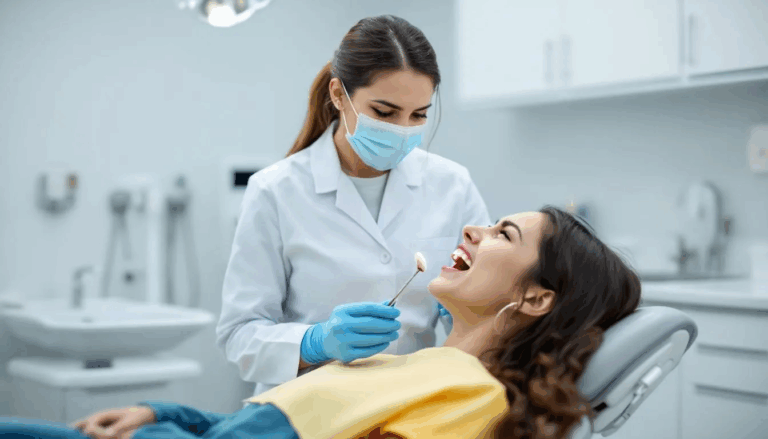Braces are a common and effective solution for correcting dental issues such as crooked teeth, overcrowding, and misaligned bites. They not only improve oral health but also boost confidence by enhancing the appearance of one’s smile. This comprehensive guide will explore the various types of braces, their benefits, and essential care tips to ensure the best results from your orthodontic treatment.
Types of Braces
Traditional Metal Braces
Metal braces are the most recognized type of braces. They consist of high-grade stainless steel brackets attached to each tooth, connected by a thin archwire. Modern metal braces are much smaller and less noticeable than in the past, and you can personalize them with colored bands.
Ceramic Braces
Ceramic braces function similarly to metal braces but feature tooth-colored or clear brackets that blend more seamlessly with your teeth. They are less visible than metal braces, making them a popular choice among adults and older teenagers.
Lingual Braces
Lingual braces are similar to traditional braces but are placed on the backside of the teeth, making them invisible from the front. They are custom-made to fit the shape of your teeth, providing a discreet option for orthodontic treatment.
Invisalign
Invisalign consists of a series of custom-made, clear plastic aligners that are virtually invisible when worn. The aligners are removable, allowing for easier eating and oral hygiene. Invisalign is suitable for mild to moderate alignment issues.
Benefits of Braces
Improved Oral Health
Correctly aligned teeth are easier to clean, reducing the risk of cavities and gum disease. Braces also help distribute biting pressure evenly, which can prevent jaw problems.
Enhanced Appearance
Straight teeth and an aligned bite can significantly improve the appearance of your smile, boosting self-confidence and social interactions.
Long-Term Dental Savings
By correcting dental issues early on, braces can prevent more severe and costly dental problems in the future.
Care Tips for Braces
Maintaining Oral Hygiene
Brushing and flossing become even more important when you have braces. Brush after every meal and use a floss threader or water flosser to clean between braces and under wires.
Eating with Braces
Avoid sticky, hard, and chewy foods that can damage braces. Cut down on sugary foods and drinks to reduce the risk of cavities.
Regular Orthodontic Visits
Attend all scheduled appointments so your orthodontist can adjust your braces and monitor your progress. These adjustments are crucial for moving your teeth into the correct position.
Protecting Your Braces
Wear a mouthguard during sports to protect your braces and mouth from injury. If any part of your braces breaks or becomes loose, contact your orthodontist immediately.
Following Orthodontist’s Instructions
Adhere to your orthodontist’s guidance regarding the care and maintenance of your braces. This may include wearing elastics as instructed and following specific oral hygiene recommendations.
Conclusion
Braces offer a powerful way to improve dental health and achieve a beautiful smile. Understanding the different types of braces available and their benefits allows you to make an informed decision about your orthodontic treatment. With proper care and maintenance, the journey with braces can lead to a lifetime of smiles and confidence.
Embracing these care tips and maintaining regular visits to your orthodontist will ensure you get the most out of your braces. Remember, the success of your treatment largely depends on your commitment to following these guidelines.
For those considering braces, or those already on their orthodontic journey, Canyon Dental Associates is here to support you every step of the way. Our commitment to personalized and affordable dental care ensures that your path to a straighter, healthier smile is as smooth and effective as possible.


